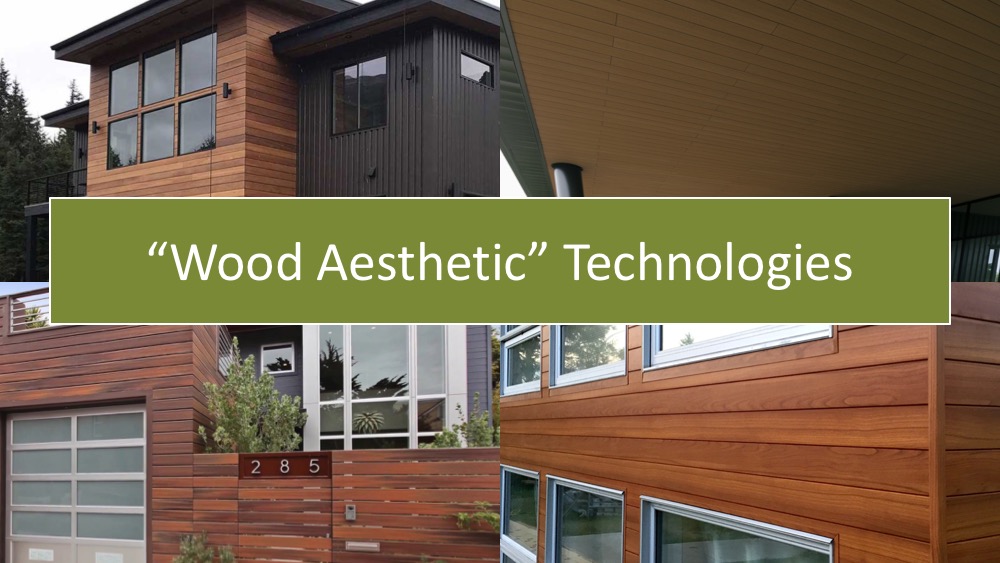
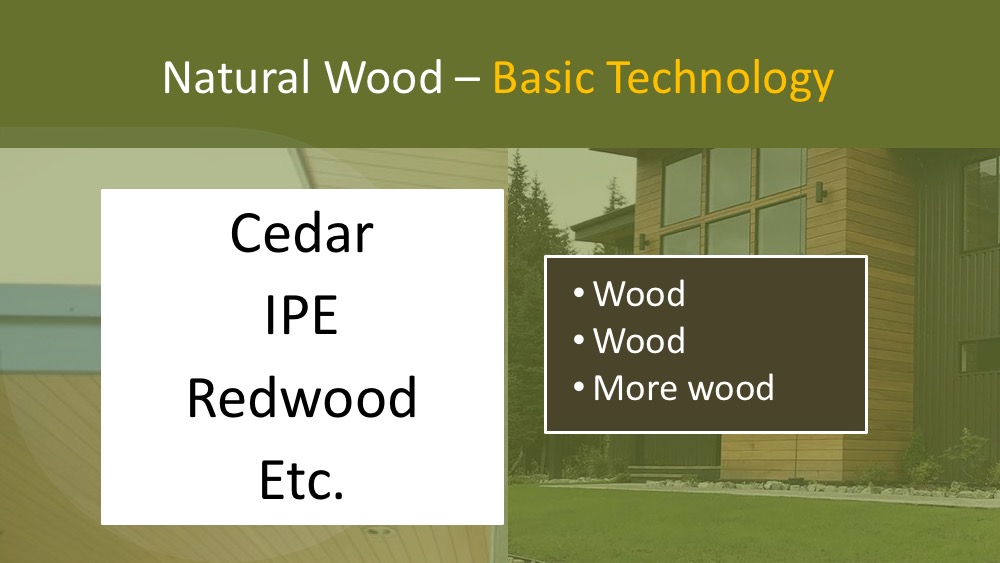
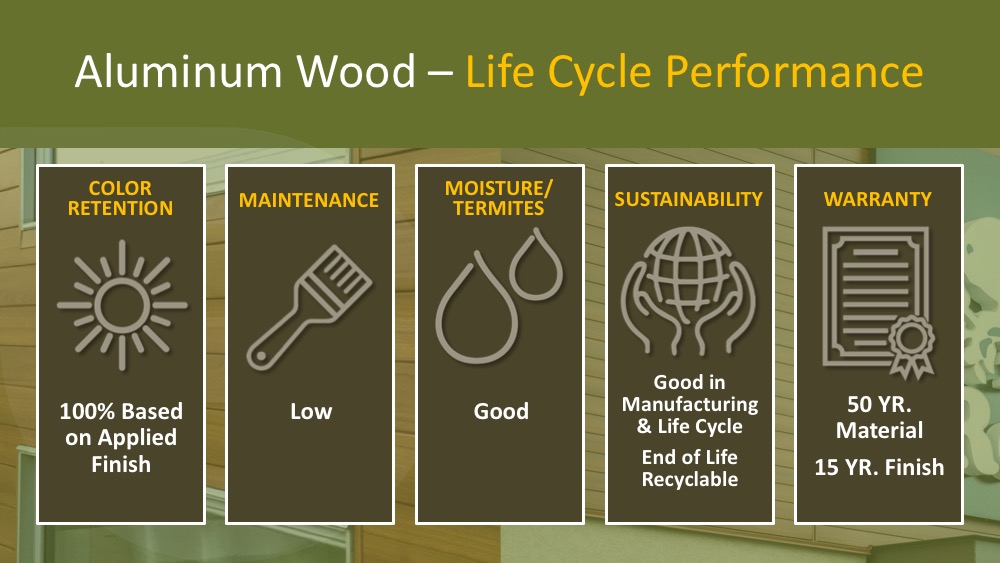
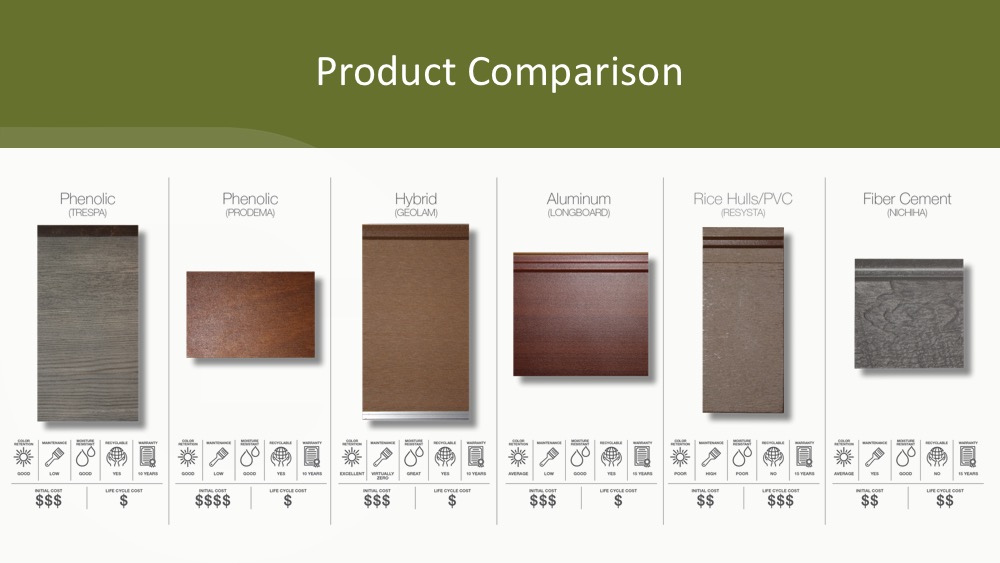
This learning unit will provide an in- depth overview of current “wood” design technologies natural and synthetic.
Learning Objectives
- Identify current market “wood aesthetic” technologies
- Understand core materials of each technology
- Understand the sustainable features and Life Cycle benefits for each technology based on the following criteria:
- Color Retention
- Maintenance
- Warranty
- Describe the surface burning characteristics and explain how they can be specified to achieve code compliance
- Installation Details
- Budgetary Information
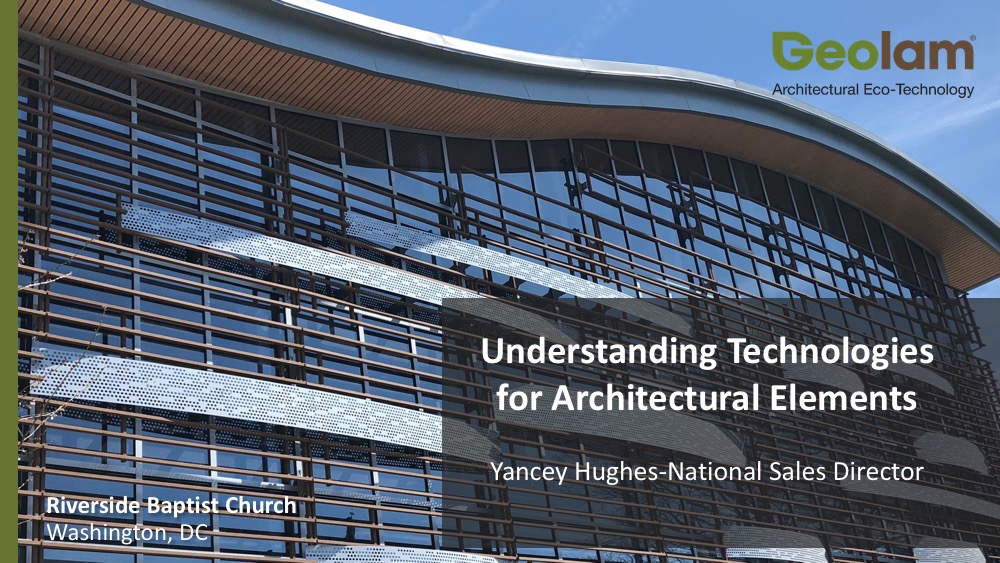
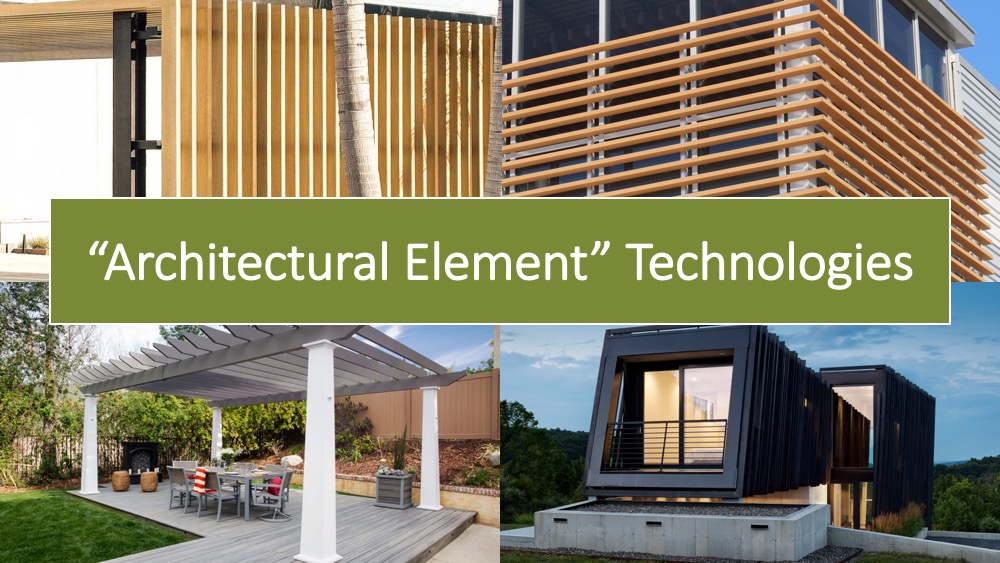
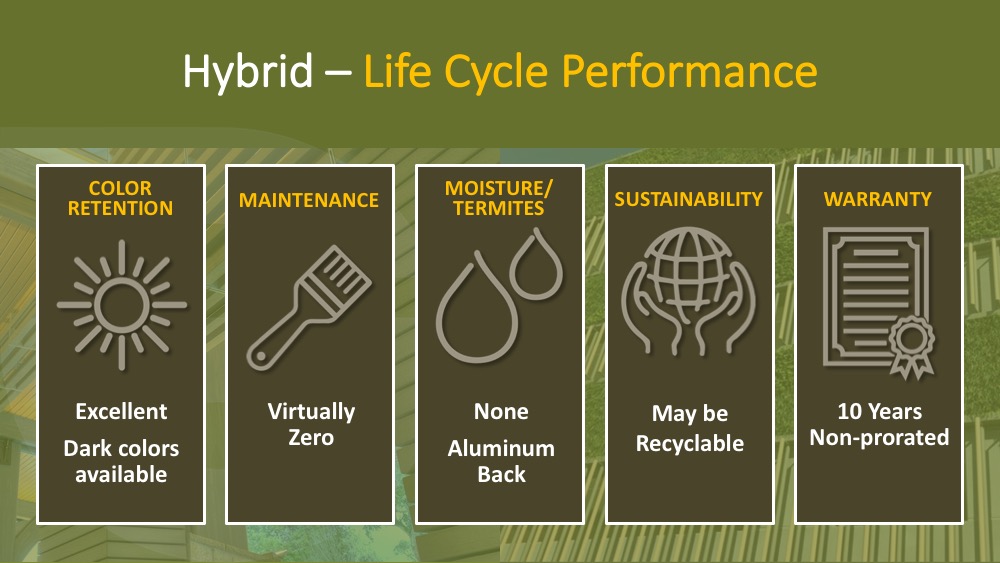
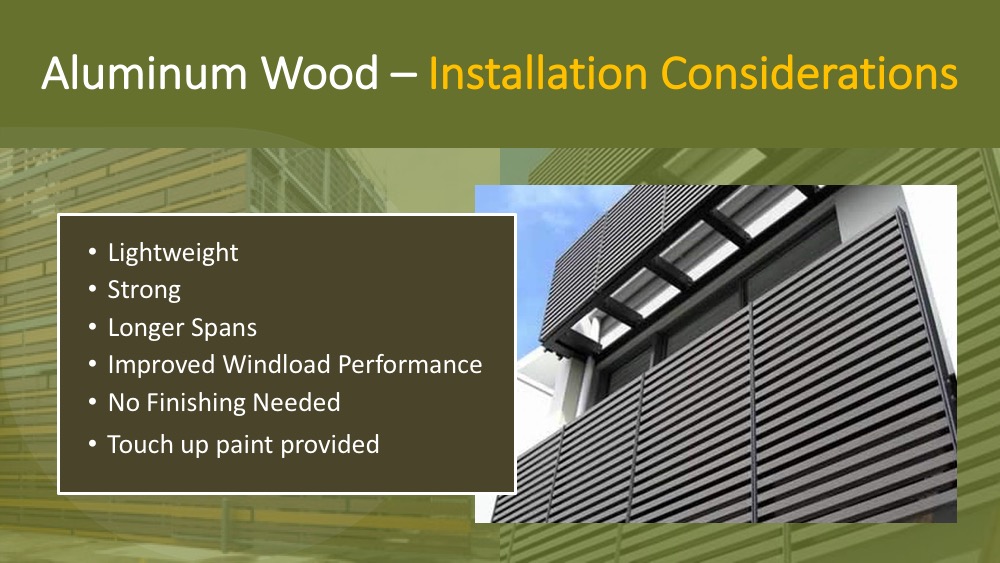
This learning unit addresses basic technologies that are used for Architectural Elements such as sun screening, fins,brise soleil, baguettes, louvers, canopies, pergolas, etc.
Learning Objectives
- Define Architectural Elements?
- Understand the typical current market “Architectural Elements” technologies
- Understand core materials of each technology
- Understand the sustainable features and Life Cycle benefits for each technology based on the following criteria:
- Color Retention
- Maintenance
- Warranty
- Budgetary Information
- Selecting the best technology selection

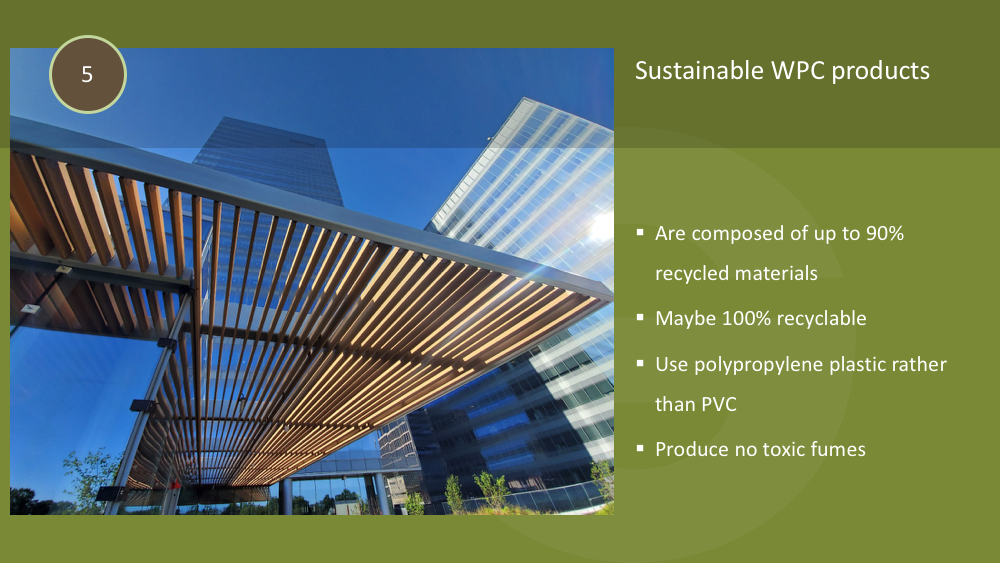
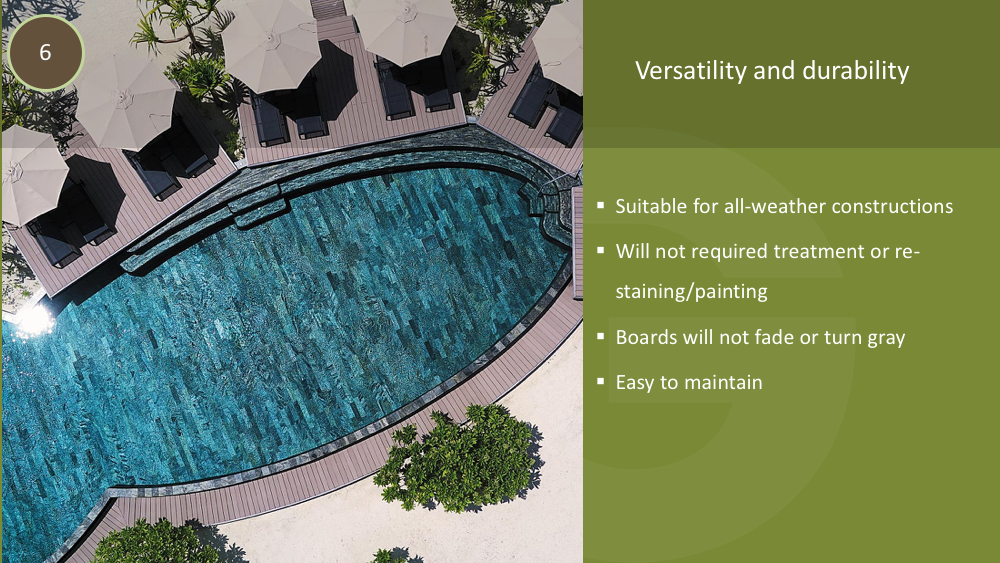
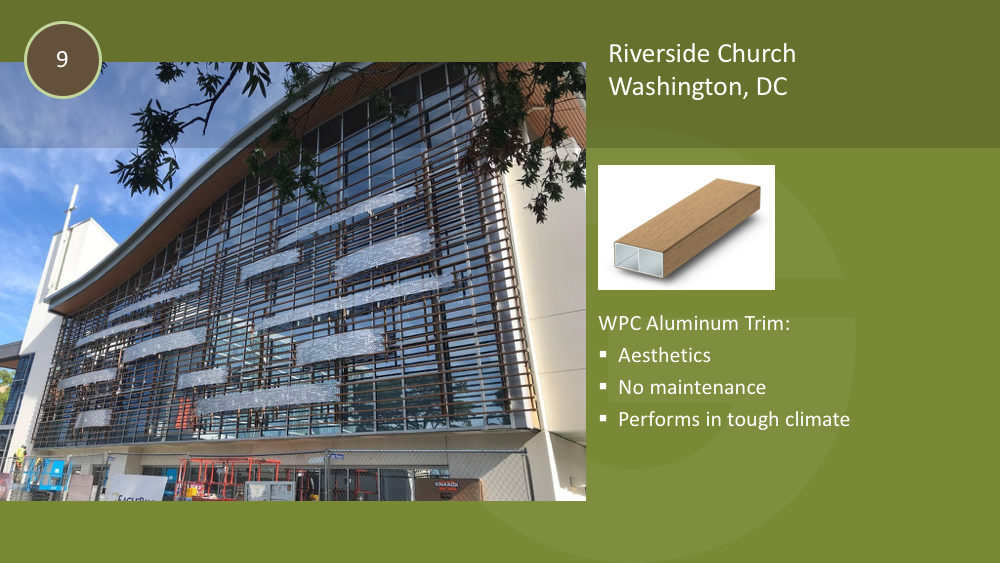
Wood-plastic composite products offer a compelling alternative to traditional wood cladding and architectural trim. These products replicate the look of natural wood but offer superior color retention and life-cycle performance while requiring little to no maintenance. This learning unit will provide an overview of wood-plastic composite cladding and trim, with an emphasis on the sustainability benefits.
Learning Objectives
- Understand sustainable wood-plastic composite, its characteristics and types, and how it differs from traditional wood.
- Explain the manufacturing process involved in producing sustainable wood-plastic composite.
- Describe the appropriate applications and main benefits of sustainable wood-plastic composite in trim and cladding applications.
- Discuss the sustainable features and benefits in both the manufacturing process and life cycle of sustainable wood-plastic composite when specified for cladding and trim applications.
- Define the surface-burning characteristics of wood-plastic composite products and explain how they can be specified to achieve code compliance.




